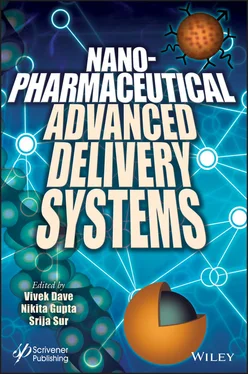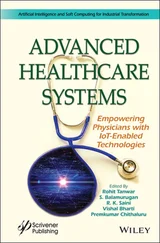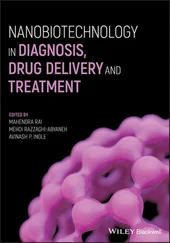1 ...6 7 8 10 11 12 ...31 Instability may occur in gastrointestinal fluids following enzymatic degradations of the particles or lipid matrix. Particle accumulation can be accomplished by improving the surfactant combination owing to ionic strength and acidic stomach pH. Stability conditions in combination with steric stabilization have been set at minimum 8–9 mV Zeta Potential [89].
Lipid nanocarriers have recently been investigated for their interaction with the major circulatory protein serum and albumin. Several groups of researchers also focused more and more on improving their body fluid stability through coating lipid nanocarriers with hydrophilic molecules like poly(ethylene)glycol (PEG) derivatives. Coating lipid nanocarriers with PEG improves stability and plasma half-life to suppress phagocytic uptake, thus improving drug bioavailability [90].
1.5.2 In Vivo Elimination of Nanocarriers
In order to deliver several drugs and activities for different objectives, lipid nanocarriers were developed. Still, the in vivo fate of such carriers remains questionable. Although majority of the lipids undergo biotransformation and deemed to be eliminated by common elimination pathways, researchers need to ensure their complete eradication after the drug has been completely released from such carriers. Nonetheless, several obstacles for lipid nanocarriers are still a hot topic for drug therapy among the most interesting and recent assignments for lipid nanocarriers. Cancer treatment, blood-brain barrier (BBB) elimination, and protein and gene delivery are fields of study where a healthy and reliable carrier of drug is essential, and lipid nanocarriers for such purposes are suggested and investigated.
1.6 Characterization Techniques for Lipid Nanocarriers
1.6.1 Size and Morphology
During parenteral administration, a significant factor in safety of biological systems is the particle size of the carrier system. Dynamic light scattering (DLS) is a method most often used for calculating particle size in solutions and conducting distribution-size study. Quasielastic light scattering or photon correlation spectroscopy (PCS) is the other term used instead of DLS. The method is based on Brownian movement of particle in dispersion. When laser light hits objects, it is scattered by Brown’s particle movement [91]. The motion of the particles depends on the size of the particle. The light intensity of laser light with a defined wavelength fluctuates the particles, which fluctuate the scattered light after striking with dispersed particles. By measuring the frequency of the scattered light fluctuation, the intensity of the Doppler shift can be determined by the use of a photon detector, depending on time and fluctuation. Fluctuations in light intensity are greatly affected by the viscosity of the solution and the temperature; hence, the particle size of dispersion can vary [91, 92–94].
Scanning electro-microscopy (SEM) and transmission electron microscopy (TEM) are the most needed tools to analyze morphological characteristics [95]. SEM and TEM characterization of nanoparticles provides shapes and surface facets, and it determines the accurate particle size of a particular particle in dispersion [96]. The morphological shape details can be taken from the SEM image for a large nanocrystal with a normal design. SEM works on the basis of scattered electrons and provides particulate morphology. The shape of a small nanocrystal cannot be analyzed by SEM because of its restricted resolution. Although TEM analysis is able to represent the morphology of such particles that are not suitable for SEM by passing electrons through in resultant, it differentiates the chemical entities on the basis of electron density [97].
Polarized light microscopy (PLM) is usually used to observed lyotropic liquid crystalline structures [98]. It can be used to confirm the presence of liposomes and similar structures in parenteral dispersion systems. The coordinated structure of the phospholipid surfaces results in anisotropical properties. Anisotropic systems deviate polarized light in the plane, which helps in imaging and gives a standard black and white or colored image using a λ-plate [98, 99].
SEM imaging only analyzes the samples in 2-D, that is, x- and y-axes, but cannot measure the z-axis to provide 3-D morphological information of a particle surface. Atomic force microscopy (AFM) overcomes this problem by analyzing the surface on the z-axis along with the x- and y-axes using deflection of a fine leaf spring. AFM is widely used for crystallinity studies of a sample. The technique uses fixed wavelengths to provide information on the molecular organization of crystals. In AFM imaging, with resolution up to 0.01 nm, the force between the surface of the material and the sensor tip is used [100]. Silicon wafers are usually used for sample fixation. The sample surface should be extra smooth for AFM imaging [101–106].
Zeta potential is an essential characteristic of particles that can be easily calculated with a zetasizer tool [92]. It is an important aspect to understand particle stability. In drug delivery applications, the particle charge is an important factor. “Zeta potential is the potential differentiation between the surface and the stationary fluid layer connected to the dispersed sample.” The particle surface is surrounded by ions charged opposite to each other, which generates the thin stern layer adsorbing non-hydrated co-ions and counter ions at the surface. The next layer consists of the hydrated/partially hydrated counter ions, and the last layer consists of co-ions; this layer is known as the diffuse layer. This layer is attached to the slip plane, an imaginary plane that separates mobile ions from immovable ions on the surface. A stable dispersion has zeta potential ideally from -30 to +30 mV. Repulsion occurs between particles with a strong positive or negative surface charge; it results in reduced stability span of dispersion through flocculation or aggregation by particles [107]. The pH of the dispersion is the factor that mostly affects the zeta potential [108].
To examine lipid and lipid carriers’ “thermal behavior,” a thermal gravimetrical analysis (TGA) and differential scanning calorimetry (DSC) are used. Melting point, crystallinity, and endothermal and exothermal characteristics of the sample are the main data generated by thermal analysis [109]. This technique involves samples being analyzed in unusual atmospheres consisting of nitrogen, oxygen, and argon warmed at a controlled heating rate. The thermal analysis can be easily predicted for phase transition, crystallization, and lipid sample amorphication by the enthalpy or entropy of the carrier system/sample, which involves change in free energy in phase transition during thermal analysis [109, 110].
Various X-ray diffraction analyses have been reported over 40 years for lipid systems and lipid dispersions. X-ray diffraction (XRD) emphasizes the crystalline nature and polymorphic transitions of lipids [111]. In the formulation development of most lipids, surfactants and drugs are polymorphic, and transformation may occur. Therefore, XRD provides a clear-cut demonstration of polymorphic transition of lipid samples, which is useful in the dispersion stability [111]. The physical attributes are the fundamental feature of lipid carriers for stable dispersions. The relation between physical aspects and dispersion stability and drug loading capacity inside the carrier system changes with the change in polymorphic forms. It is evident in literature that XRD analysis is employed in several lipidic drug delivery nanosystems including lamellar, hexagonal, and cubic phases [112]. A specialized x-ray scattering technique is available to identify the crystal lattice in aqueous dispersion. This technique is known as small-angle x-ray scattering.
Читать дальше












